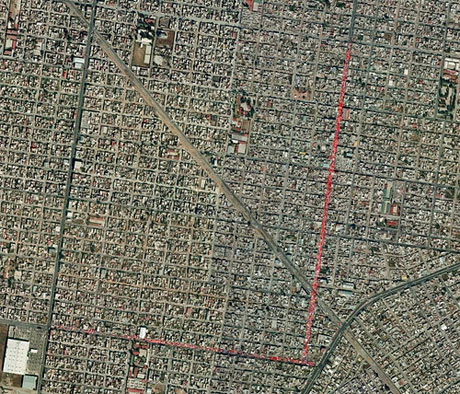
IMAGE: Mexico City street market captured by Google Earth, part of a set curated by urbanTick.
Fabian Neuhaus of the blog urbanTick has assembled a collection of aerial images of Mexico City’s street markets, as captured by Google Earth.
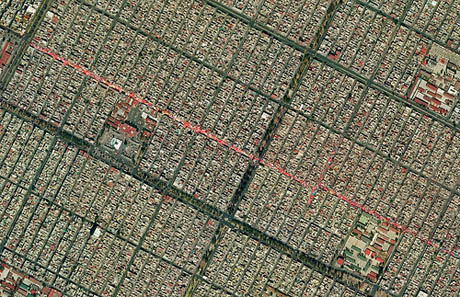
IMAGE: Mexico City street market captured by Google Earth, part of a set curated by urbanTick.
There are more than 1,300 of these tianguis, or outdoor markets, in DF, according to food historian Rachel Laudan, popping up in different neighbourhoods on different days of the week, and filled with vendors selling everything from fresh vegetables to pirated Montblanc watches. They are not farmers’ markets (the majority of the produce on sale will have been bought at the city’s vast wholesale market, La Central), nor are they street fairs, although they often share a similarly lively atmosphere.
Instead, they offer everything that Walmart (which sells more food each year from its two thousand plus retail stores than anywhere else in Mexico) doesn’t or can’t, including sensory overload, niche products tailored to the community’s particular preferences, and much more dynamic and varied interactions between vendors and consumers.
According to Laudan’s description, which is well worth reading in full:
Tianguis spring up as if by magic, sealing off streets and causing tangles of traffic. Trucks and cars are double and triple-parked by entrepreneurial attendants expecting 50 centavos or a dollar for their services. Plastic awnings, blue, yellow, or most often, red, enclose the rows of stalls as thoroughly as concrete encloses a shopping mall, casting everything inside with improbable tints. The strains of the latest pirated CD compete with the gossip of the shoppers and the calls of the merchants: “Que vas a llevar?” “What are you going to take?”
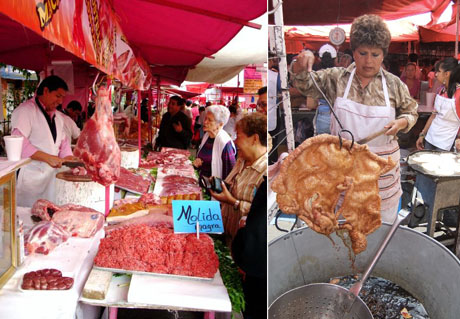
IMAGE: “Inside” a tianguis: photograph on the right by Rachel Laudan, and photograph on the left by David Lida, whose description of shopping at his local tianguis is also fantastic.
At ground level, photos of tianguis capture the vibrant colours, constant movement, personalities, and details (“Shrimp cocktail serves simultaneously as hangover cure and aphrodisiac. What more could you ask for?”) that Laudan brings to life so vividly in her text.
From above, however, in the Google Earth images that Neuhaus has curated, the markets are abstracted into red rivers, temporarily flowing through the city where the street used to be, and it becomes easy to imagine these recurring red lines as some kind of North Korean-style people picture, using tarps to beam a recurring signal in a code that has yet to be cracked, inscribing the pulse of the city onto its streets.
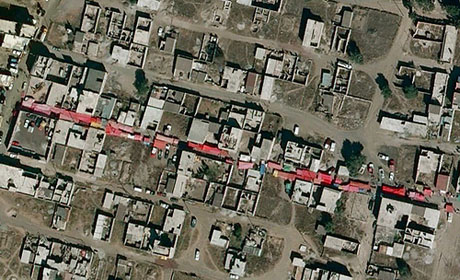
IMAGE: Mexico City street market captured by Google Earth, part of a set curated by urbanTick.
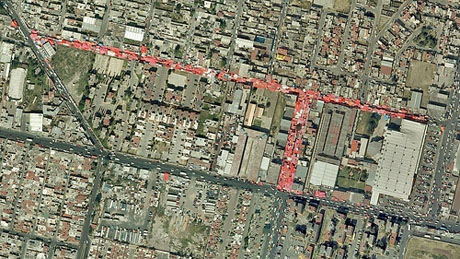
IMAGE: Mexico City street market captured by Google Earth, part of a set curated by urbanTick.
Visit urbanTick’s Flickr set for more. Found via @ArchisVolume.

